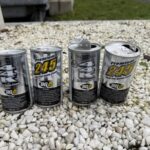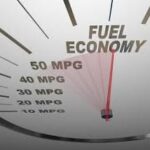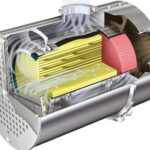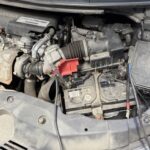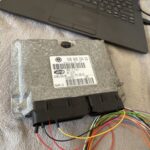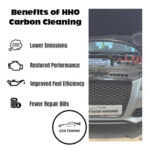CCA Tuning – Here to Help with all your Motoring Needs
From performance tuning to fault diagnostics, CCA Tuning offers expert mobile services to keep your vehicle running at its best. Whether you’re chasing more power, better efficiency, or a solution to an engine issue – we’re here to help.
CCA Tuning offers expert mobile services to keep your vehicle running at its best
Click on Cross Hairs to Expand Text…
Ad Blue Solutions
AdBlue is a solution of urea and deionized water used in diesel engines to reduce harmful emissions, specifically nitrous oxide (NOx), through the Selective Catalytic Reduction (SCR) process. It is crucial for meeting emission standards and ensuring vehicle performance and longevity. AdBlue is not a fuel and should not be added to the fuel tank.
Here’s a more detailed explanation:
- Purpose:
AdBlue is injected into the exhaust system before the NOx emissions are expelled. It reacts with the NOx, converting it into harmless nitrogen and water vapor.
- Function:
The SCR system, which uses AdBlue, is a key component in modern diesel
engines to meet Euro 6 emission standards and beyond.
- Importance:
AdBlue is vital for maintaining vehicle compliance with environmental
regulations, preventing potential engine damage, and ensuring optimal
performance.
- Usage:
Most vehicles will display a warning light when AdBlue levels are low,
prompting a refill. AdBlue is typically consumed at a rate of around 1 litre
every 600 miles, but this can vary depending on the vehicle and driving
habits.
- Storage and Handling:
AdBlue should be stored in a separate tank and never mixed with fuel.
- Potential Issues:
While AdBlue is generally reliable, problems with the system can lead to
increased emissions, reduced performance, and potential engine damage if
not addressed promptly.
Get in touch if you have any issues so we can keep you on the road and on track.
HHO Engine carbon cleaning offers several benefits, including restoring engine performance, improving fuel efficiency, reducing emissions, and potentially extending the lifespan of engine components. By removing carbon buildup, the engine can operate more efficiently, leading to smoother running, increased power, and reduced noise.
Here’s a more detailed look at the benefits:
- Restored Engine Performance:
Carbon buildup can cause sluggish acceleration, hesitation, and reduced
power. Cleaning the engine can restore it to its optimal performance level,
leading to smoother and more responsive driving.
- Improved Fuel Efficiency:
Carbon deposits can hinder combustion, leading to reduced fuel
economy. Removing these deposits can restore the engine’s efficiency,
resulting in better mileage and lower fuel bills.
- Reduced Emissions:
HHO Engine carbon cleaning can significantly reduce harmful emissions,
contributing to cleaner air and potentially helping vehicles pass MOT tests.
- Extended Engine Lifespan:
By preventing carbon buildup from damaging engine components, cleaning
can help prolong the lifespan of the engine and reduce the risk of costly
repairs.
- Lower Engine Noise:
Carbon buildup can contribute to engine noise and vibrations. Cleaning can
reduce these issues and lead to a quieter driving experience.
- Smoother Idling:
HHO Engine carbon cleaning can help improve the smoothness of the engine’s
idling, particularly in vehicles with higher mileage.
- Reduced Risk of Component Failure:
Carbon buildup can cause wear and tear on various engine components,
increasing the risk of failure. Carbon cleaning can help prevent this by
ensuring proper engine operation.
DPF Solutions
A Diesel Particulate Filter (DPF) solution typically involves cleaning the filter to remove soot buildup, which can lead to reduced engine performance and increased emissions. This can be achieved through methods like driving at high speeds to induce regeneration, using specialized DPF cleaning fluids, or professional cleaning services.
Here’s a more detailed look at DPF solutions:
- Regeneration:
- Passive Regeneration:
The engine’s heat burns off soot during normal driving conditions.
- Active Regeneration:
The engine controller forces a high-temperature burn-off of soot. This often involves driving at higher speeds for an extended period.
- Signs of Regeneration:
Fuel consumption slightly increases, and the cooling fans may run.
- DPF Cleaning Fluids:
- Specialized Additives:
Some additives are designed to lower the soot ignition temperature, aiding in more efficient soot burning during regeneration.
- Cleaning Fluids:
Some products and cleaners can be used to soak and clean the DPF filter on and off the car.
- Professional Cleaning:
Services like DPF Cleaning we offer various professional cleaning methods, including thermal regeneration, ultrasonic cleaning, and more.
- DPF Replacement:
- Cost-Effective Solution:
If cleaning is not successful, replacing the DPF filter is a more comprehensive but expensive solution we can assist with a competitive garage to assist with this.
- Illegal Removal:
Removing the DPF filter (DPF delete) is illegal and can lead to penalties.
- Other Solutions:
- Engine Flushing:
Forté Lubricants suggests adding engine flush and injector cleaner/regenerator to aid in DPF cleaning and regeneration, as described on their website.
- Regular Maintenance:
Ensuring proper oil levels and filter changes can contribute to a healthy DPF system.
And more…. Get in touch for further options
A Stage 1 remapping offers several benefits, primarily focusing on enhanced performance and potentially improved fuel efficiency without requiring any hardware modifications. It typically results in increased power and torque, better throttle response, and a smoother, more enjoyable driving experience. Additionally, Stage 1 remapping can also lead to improved fuel economy and reduced emissions.
Key Benefits of Stage 1 Remapping:
- Increased Power and Torque:
A Stage 1 remap can boost the vehicle’s power output, leading to faster acceleration and improved overall performance.
- Improved Throttle Response:
The remap can optimize the way the engine responds to throttle inputs, making the vehicle feel more responsive and agile.
- Enhanced Fuel Efficiency:
While not always the primary goal, a Stage 1 remap can often improve fuel economy by optimizing the air-fuel mixture and other engine parameters.
- Smoother Power Delivery:
The remap can smooth out the power delivery, resulting in a more consistent and enjoyable driving experience.
- Better Driveability:
Improved throttle response and smoother power delivery contribute to a more refined and enjoyable driving experience.
- Reduced Emissions:
By optimizing engine performance, a Stage 1 remap can sometimes contribute to reduced emissions.
- Cost-Effective:
Compared to more advanced tuning stages, a Stage 1 remap offers a good balance of performance enhancements and affordability.
Swirl flap deletion, also known as removal, refers to the process of removing or disabling swirl flaps in a diesel engine. This is often done because swirl flaps can cause problems like carbon build-up and potential engine damage. While they are designed to improve combustion and reduce emissions, their removal can sometimes lead to improved performance and fuel efficiency.
EGR (Exhaust Gas Recirculation) solutions address issues with the EGR system, a component that recirculates exhaust gases back into the engine to reduce NOx emissions. Common EGR problems include valve sticking, carbon buildup, and system failures, leading to potential engine damage or reduced performance. Solutions range from cleaning the valve and system to reprogramming the ECU, with some even opting for EGR system removal.
Understanding EGR Systems:
- Function:
EGR systems recirculate a portion of the engine’s exhaust gases back into
the intake, reducing combustion temperatures and NOx emissions.
- Components:
The system typically includes an EGR valve, pipes, and a cooler (in some
cases) to manage the flow and temperature of the recirculated gases.
- Benefits:
Reduced NOx emissions, potentially improved fuel efficiency, and lower
engine temperatures.
- Cleaning:
Removing carbon buildup from the valve, pipes, and intake manifold can
restore the system’s proper function.
- EGR Valve Replacement:
Replacing a faulty or heavily damaged valve can be necessary to resolve the
problem.
- ECU Reprogramming:
Reprogramming the Engine Control Unit (ECU) can adjust the EGR system’s
operation, potentially optimizing its performance.
- EGR System Removal/Delete:
In some cases, the entire EGR system can be removed, often with ECU
reprogramming,

